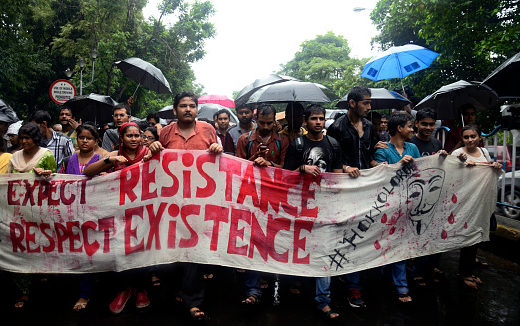 Free speech is fast becoming a hot-button issue at colleges across the country, with campus protests often mirroring those of the public-at-large on issues such as racism or tackling institution-specific matters such as college governance. On the surface, the issue of campus free speech may seem like a purely legal concern, yet in reality, colleges should also treat it as a public relations problem.
Free speech is fast becoming a hot-button issue at colleges across the country, with campus protests often mirroring those of the public-at-large on issues such as racism or tackling institution-specific matters such as college governance. On the surface, the issue of campus free speech may seem like a purely legal concern, yet in reality, colleges should also treat it as a public relations problem.
What the public does not generally understand is that the First Amendment right to free speech is not absolute. It is much more nuanced. People cannot just say what they want whenever they want, and certainly not on college campuses. There is no right to free speech at private educational institutions, and speech can be restricted to a certain degree at public institutions. To be clear, even a public higher education institution has the right to impose certain restrictions on protest activities.
Yet just because a college can limit speech does not mean it should. Colleges are loathe to take any action perceived as encroaching on free speech, thus undermining their image as centers of learning, creative thinking and open discourse. College campuses should be seen as places that encourage independent thought and social awareness even to the point of protest. But, at the same time, higher ed institutions must always keep safety and the educational mission at the forefront of their daily operations.
So how can colleges avoid damaging their educational franchise while still maintaining a safe and orderly campus? The answer is planning, communication and positive messaging.
From an institutional perspective, protests today bear little resemblance to those that stole the headlines in the 1960s and 1970s. Back then, there were no computers, cell phones, Internet or email, and schools were often blindsided by student activism. Today, schools know protest plans well in advance, since most are coordinated through social media. That means the administration has the opportunity to work with protestors, actually helping to shape the protest and establish expectations.
Viewed this way, campus protest is much like an organized chess match, in which both the school and the students have the opportunity to anticipate and plan for the opposition’s next moves. Doing that effectively requires advance planning.
Delegating protest oversight and control to a small and nimble decision-making team is one approach that has proven effective. Members of the team might include the provost, the VP for student affairs, the director of public safety and the VP of communication. A few student affairs professionals can then be designated to work closely and proactively with protest leaders.
Having school officials on the ground level of a protest ensures that the school has all the inside information it needs to formulate its game plan. Such plans can then be customized to each individual demonstration, whether the protest be over racial discrimination, college governance or endowment investment.
Creating and disseminating protest restrictions well in advance (preferably in student handbooks at student orientations) establishes the rules of engagement. Schools should make clear that these guidelines comply with federal, state and local laws, and they should articulate institutional policies and procedures. Schools can then rely on these rules to work with protestors to set limits on the time, place and manner of the demonstration. For example, a school may choose to prohibit protests during final exams. Or it may allow protests on the college green, but not within the administration building. Managing expectations well in advance of a protest diminishes the potential for the type of confusion or emotion that causes unmanageable disruptions.
Communications before, during and after a protest are critical. A college should use social media to its advantage, engaging directly with students, setting expectations and boundaries, and controlling its public image. With a media plan in place, press releases and social media posts can be drafted well in advance of the day of the protest. This way, a school can tailor its message and ensure that anyone speaking on its behalf stays on message when dealing with the media. The goal is to avoid those cringe-worthy public comments made when unprepared school officials speak off the cuff. It does not help the school’s public image if it appears that the administration and the students are at odds.
By working with protesters, colleges and universities can present demonstrations and campus dissent as an opportunity for discourse. That, in turn, can turn a potential public relations problem into a positive and sanctioned part of the educational experience.
AiVi Nguyen is a partner and Anthony Dragga is an associate at the law firm of Bowditch & Dewey, LLP. Both focus their practices on business and employment litigation.
Related Posts:
The Conundrums of the University’s Ideological Battlegrounds
Ten Game-Changing Communications Steps for College and University Presidents
Encourage the Entrepreneur (but Don’t Discourage the Young Poet)
Look What’s Happening Out In the Streets
Summer 1991 Journal: Higher Education’s Shrinking Share (including Focus on Political Correctness)
[ssba]
